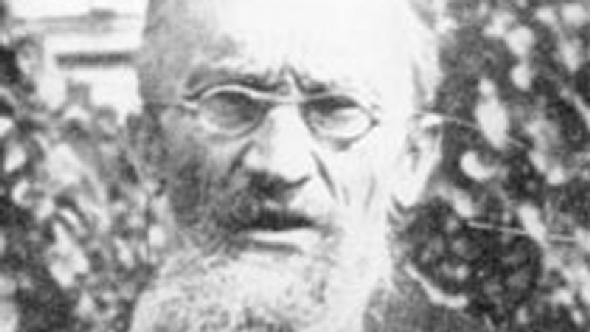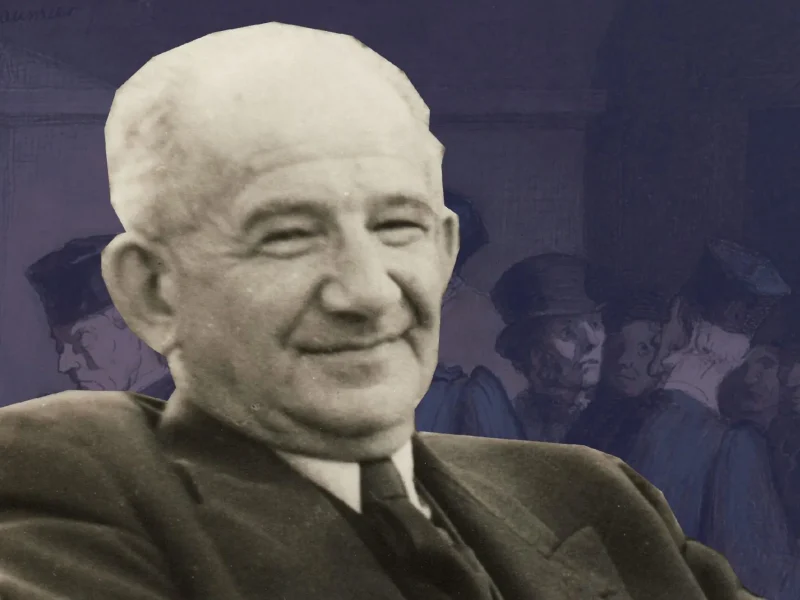Ah, Wladimir Köppen, the man who looked at the Earth’s climate zones and thought, “Hey, this could use some serious organizing!” He’s the sort of fella who not only appreciated the world’s climate complexity but also knew how to break it down into chewable bits. A bit like making a complex dish more palate-pleasing, if you will.
The Köppen Climate Classification System: More than Just Labels
So, what makes this guy’s climate classification system so remarkable? Well, it’s not just about slapping labels on different parts of the world map. Nah, it goes deeper than that. Imagine a puzzle, a big one with countless pieces that look kinda similar. Now picture someone stepping in and laying down the rules. Rules that help you figure out which pieces fit where. That’s what Köppen did for climate science. He gave it structure.
Köppen didn’t just wake up one day and decide to categorize climates. Nope. He dived deep into the elements—temperature, precipitation, vegetation—to come up with categories that made sense. But get this, he also had the foresight to make his system flexible. So, when new data and research hit the scene, the system could adapt. Talk about thinking ahead, right?
Köppen had this knack for making intricate scientific principles feel so down-to-earth. If you were to have a conversation with the guy, he’d probably explain his system as if he were talking about different flavors of ice cream. Vanilla for cold climates, maybe a mango sorbet for the tropics. Simple, yet deep.
The Man Behind the Method
Köppen was more than just his famed classification system. He had a well-rounded life filled with academia, research, and good old human interaction. In fact, he often collaborated with other experts in the field, like geographers and botanists, to enrich his understanding of the world’s climates. And it wasn’t all about getting his name on scientific papers. No, this was a man driven by pure curiosity and a desire to make the world a bit easier to understand.
So, the next time you find yourself staring at a climate map, spare a thought for Wladimir Köppen. He’s the guy who took one of Earth’s most complex systems and turned it into something you could explain to your grandma. Now, that’s the mark of a real genius.
Wladimir Köppen’s Game-Changing Climate System
First off, the Köppen Climate Classification System isn’t just a tongue twister; it’s the gold standard for classifying the Earth’s myriad climates. Think of it as the periodic table but for weather! Wladimir Köppen broke down the complex patterns of weather into digestible categories based on temperature, precipitation, and seasonality. Ah, yes, this guy was way ahead of the curve.
The Core Theorem of Köppen’s System
So here’s the h3 moment—Köppen was fascinated by how temperature and moisture interacted. He formulated the idea that different kinds of vegetation thrived in different climates, and this could be used to classify those climates. No numbers, no graphs, just a splendid blend of botany and climatology. A real interdisciplinary champ, wasn’t he?
Why’s this so revolutionary? Well, imagine you’re a farmer in Idaho. You could actually look at Köppen’s classifications and know exactly what crops would flourish in your region. We’re talking about real-world, roll-up-your-sleeves kind of utility here.
Let’s get into the guts of it a bit. Köppen didn’t just give us categories; he gave us a flexible tool. As climate data evolved, so could his system. That’s not just categorizing; that’s future-proofing. A major leap in the realm of scientific methodology, if you ask me.
Let’s talk about metrics for a sec, as Köppen had a thing for those. Though we’re keeping formulas at bay, it’s worth mentioning that he used statistical analysis to validate his system. He looked at long-term averages of temperature and rainfall data, meticulously sorting out the outliers to ensure his model was as accurate as it could be. This wasn’t just theory; this was tested, validated, and peer-reviewed science.
Fast-forward to today, and guess what? Yep, Köppen’s system still holds water. Researchers use it to track climate change and its potential impacts. From geographers to environmentalists, to the layman interested in understanding why Arizona is so hot, it serves us all.
And let’s not forget the guy’s a pro at sharing knowledge. Countless scientific papers, books, and mentorships have his name on them, shaping the understanding of climate science for generations to come. A real trailblazer in the full sense of the word.
Wladimir Köppen’s Interdisciplinary Approach to Climate Science
First things first, interdisciplinarity. It’s not just a scrabble-winning word, it’s Köppen’s unique signature. Picture a mad scientist in a lab coat, only replace the ‘mad’ with ‘genius’ and add in botany books and weather maps. You’ve got a landscape where climatology tangoes with botany, geography, and even statistics.
One of Köppen’s key contributions to climate science was his Köppen Climate Classification System, a masterpiece that braids together elements of vegetation science and meteorology. The theorem here is as simple as it is groundbreaking. It’s about patterns, baby! Köppen connected the dots between climate and the kinds of plants that grow in specific climates. It’s an organic, living classification system, one that shifts and evolves just as our world does.
Let’s talk metrics. While we won’t delve into formulas—promise!—we gotta acknowledge that Köppen loved to play with numbers. By applying statistical methods, he weaved long-term weather data into his system. This wasn’t merely theoretical stuff; it was empirically backed. There’s no “I think” here, it’s all about “I know,” and that’s a seismic shift in how science was done.
But wait, there’s more. You can’t talk about Köppen without tipping your hat to the way he mentored the next generation of climate scientists. The guy was a walking, talking hub of knowledge transfer, which, let’s be honest, is the backbone of any scientific progress.
The real kicker? His work isn’t confined to musty libraries or elite conferences. No siree! Urban planners, agriculturalists, and even your everyday Joe who’s wondering why his rose bushes won’t bloom can benefit from Köppen’s interdisciplinary genius. His methods provide a framework for environmental policy, agricultural planning, and even disaster preparedness.
The more we dig into Köppen’s work, the clearer it becomes that he was more than a scientist; he was a visionary. His ability to crisscross disciplines created not just a body of work but a body of knowledge. Ecology, conservationism, earth sciences, you name it, they’ve all been touched by his innovations.
Wladimir Köppen: The Trailblazer in Data Compilation Techniques
So, here’s the deal with Köppen’s data collection methods. We’re talking about the man who practically invented the term “comprehensive data.” Köppen was all over climate zones, weather patterns, and geographic variables, aggregating this mountain of information into something coherent. He utilized the power of long-term datasets, not just a couple of years, but often centuries-worth of weather and climate observations.
Now, let’s chat about the theorem of his data collection. If you picture a huge, intricate web of numbers and variables, you’ve nailed it. The core idea is about how multiple data points across time and geography can produce more reliable conclusions. No need for the tough math, just know that Köppen took all those numbers and made sense of it like a wizard doing a spell.
Oh boy, statistics! Yeah, I know, it can be dry as a cracker, but not when Köppen does it. He knew how to juggle mean values, trends, and patterns, creating a stats-powered symphony that would make your local weatherman weep with joy. It was all so fresh, so precise, and so ground-breaking that it became the cornerstone for many later studies in climatology.
And hey, we’ve got to talk about data accessibility. Köppen was all about getting this treasure trove of info into the hands of the people who needed it most. Whether you were an academic, a policy-maker, or a concerned citizen, he was big on making his findings available for broader usage.
Don’t think that he stopped there, though. Köppen was always two steps ahead, developing innovative indexing techniques. This isn’t just about storing data but making it retrievable and usable. Imagine a gigantic library where every book is exactly where it should be; that’s what Köppen’s data organization methods felt like. These tactics were light years ahead of their time and formed the basis for modern information science.
If you’re thinking Köppen was just another dusty academic, think again. His techniques had real-world applications that are still in use. For example, urban planners lean heavily on Köppen’s data to build sustainable cities, while agriculturalists use it to pick the right crops for the right climates. It’s like the man himself is sitting in on these planning sessions, his work still speaking for him.
Here’s the kicker; Köppen’s legacy isn’t just in the big projects and systems. It’s in every small decision that relies on accurate climate data. The way he blended meticulous data collection with a broader vision of its uses is something that still leaves me awestruck. The guy took interdisciplinary research and married it to what we now call data science, long before any of these terms became buzzwords.
The Unveiling Wisdom of Wladimir Köppen on Climate Change Intricacies
First off, let’s talk theorems. Now, don’t get me wrong, we’re not gonna get into Greek letters and complicated formulas. Nope, Köppen liked to keep things straight. His theorem basically suggests that small variations in Earth’s temperature can result in massive changes in climate zones. It’s all about how everything in our climate is connected. You tweak one knob, and the whole system might go out of whack. The guy was basically the OG of climate interconnectivity, and his theorems still underpin modern models.
Switching gears a bit, let’s delve into statistics. If you think stats are boring, then you haven’t looked at them through Köppen’s lens. He wasn’t about one-off measurements or superficial trends. Oh no, Köppen was playing 4D chess with statistical time series, cross-referencing decades of temperature fluctuations, rainfall measurements, and wind patterns. His knack for data crunching translated numbers into a story, like a bard singing tales of our Earth’s ever-changing moods.
Now, onto climate change indicators. While Köppen was more of a historical figure, his work paved the way for current indicators that we look at to understand climate change. Think rising sea levels, ice melt rates, and increased incidents of extreme weather. These weren’t just abstract concepts to Köppen; he saw them as crucial pieces of a bigger puzzle, each adding a stroke to a complex climatic painting.
Ah, you’ve gotta love data collation techniques, don’t you? Köppen wasn’t a hoarder; he was a collector. A collector of varied climatic data, to be precise. He amassed information like it was going out of style, and mind you, this was way before we had these fancy data algorithms. His indexing methods were the talk of the academic town. Picture an old-school library card system, but make it a thousand times more complex and efficient.
Let’s not forget the practical applications of Köppen’s work. It’s not all theory and numbers. The ripple effects of his work have influenced modern strategies for sustainable development, renewable energy adoption, and even agricultural planning. Even today, his foundational research assists policymakers who are navigating the rough waters of climate change mitigation.
And just to sprinkle in a little extra, Köppen’s work has direct relevance to public awareness. Yep, before it was cool to talk about climate change over coffee, Köppen had already laid the groundwork. His holistic viewpoint was all about connecting the dots between science, public policy, and everyday life. It’s not just a story of a man and his love for weather; it’s a tale of a visionary who saw the bigger picture of climate complexities and human impact.
Conclusion
Ah, Wladimir Köppen. A name that reverberates through the halls of climate science like a catchy tune you can’t get out of your head. He didn’t just dip his toes into the world of meteorology; he did a full-on cannonball! This guy was the rock star of climate classification, and he didn’t need an electric guitar to make noise. His instruments? Oh, just some ground-breaking theorems and statistical methodologies that academics are still headbanging to today.
And listen, he wasn’t one of those scientists that locks themselves in a lab all day. Nope, his work was the epitome of interdisciplinary research. He was like a scientific social butterfly, flitting from geography to botany, and making meaningful connections that left a lasting imprint on how we understand the big ol’ puzzle of Earth’s climate zones.
What makes him truly spellbinding? His foresight. Even before climate change became a household phrase, Köppen was already dissecting its intricacies. He was the guy at the party who didn’t just talk about the weather; he dug deep into long-term patterns, seasonal variations, and the socio-economic impacts. Yeah, you bet that made him the life of any academic soiree.
In the real world, the guy was a hero in disguise. His research is the bedrock for our current strategies in sustainable development, climate policy, and even emergency preparedness for extreme weather events. He left a legacy that’s not just printed on paper but etched into the way we live our lives amid a changing climate.
So, here’s the kicker. It’s been over a century, and we’re still rifling through Köppen’s treasure trove of wisdom. It’s like finding an old vinyl record and realizing the music still holds up, better than ever. Wladimir Köppen wasn’t just ahead of his time; he was ahead of our time, and that, my friends, is the mark of a true scientific legend.
References
- The Köppen Climate Classification System: Origins and Impact
- Wladimir Köppen: A Life in Weather
- The Statistical Genius of Wladimir Köppen
- Köppen’s Global Influence: A Retrospective
- The Interdisciplinary Approach of Wladimir Köppen
- A Historical Overview of Climate Studies
- Köppen and Modern Climate Policy


